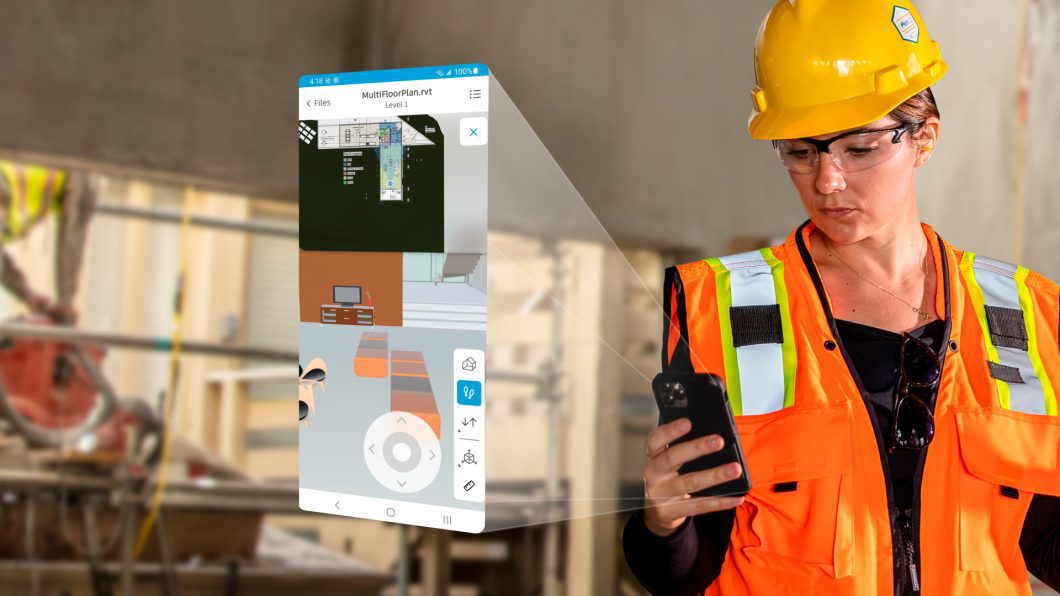Help us improve your experience. See content that is made for you!
See how IBM increased their efficiency by up to 30%!

Help us improve your experience. See content that is made for you!
See how IBM increased their efficiency by up to 30%!


Effective communication between office and field teams is paramount to the success of any construction project. Even the most well-designed and meticulously planned projects will underperform if teams are unable to bring those plans to life on the jobsite.
Oftentimes an information gap exists in project communication between field and office teams. While team members on the design and coordination side often use BIM to plan and visualize projects, that rich model data isn’t effectively transmitted outside the office.
This creates siloed workflows between teams, resulting in decreased efficiency. In fact, research shows that 60% of general contractors see coordination and communication issues as key contributors to low labor productivity.
This lack of alignment also leads to poor execution, more rework, and higher costs. It's estimated that more than $280 billion annual rework expenses in the US are due to poor project data and communication.
The disconnect between office and field is a major pain point for moving projects forward. At Autodesk, we want to be part of the solution. That’s why we’re so excited to release new model viewing capabilities on mobile and the web. These features offer extended access to the PlanGrid Build app for Autodesk Docs, BIM Collaborate, and BIM Collaborate Pro paid and trial users.
These new capabilities in Autodesk Construction Cloud further strengthen BIM workflows in the field. Users can visualize, interact, and analyze the latest model data within aligned 2D sheets and 3D models, simplifying contextualized viewing of installation and project measurements.
You can use this new model in conjunction with a number of model-viewing capabilities, including PlaceMe, Minimap, Gyroscope, Levels Navigation, and more.
With this new release, teams can say goodbye to poor data visibility, inaccurate project information, and inefficient communication. Instead, these latest model viewing features empower field professionals to stay updated and informed across all phases of the project lifecycle so they can move forward with confidence.
When field teams have access to better viewing capabilities, they can benefit in several ways. Consider the following use cases.
Contextualize installation. When dealing with multiple trades, team members must be able to visualize how each trade fits within the project.
With Autodesk Construction Cloud, users can access aggregated models onsite to see the latest coordinated model. This gives them the knowledge to determine where objects are located in the context of the full project so workers can properly install equipment and understand installation sequencing while avoiding potential clashes.
Accurate measurements. Field teams can verify dimensions, distances and clearances by measuring the 3D model. This allows the teams to build with confidence and reduce the amount of back-and-forth with the trailer for any missing dimension on the 2D plans.
Document control. Enhanced model viewing enables teams to access folders and files offline using their mobile devices, which means they can always work with the latest project information. What’s more, mobile users can automatically sync and download project files without compromising web permissions.
Access to construction documents in the field removes the guesswork around what’s relevant or up-to-date. This also gives teams historical references at their fingertips, so they know what’s been done and when.
Reduce rework. When multiple trades are part of the construction process, it is important for everyone involved to be aligned on the same expectations and changes of the project. Without a reliable platform, these teams can fail to meet deadlines, which can be a costly mistake.
Autodesk Construction Cloud solves these issues by serving as a single source of truth for all stakeholders. When team members can view updated project information in real-time, it’s easier to spot mistakes and resolve conflicts. This minimizes rework and costs, which helps the entire team operate in a smooth, efficient, and cost-effective manner.
“The more perspective one has access to, the more potential value they can add to the project. Access to 3D model viewing generates multiple layers of perspective, especially when the UI is intuitive and robust,” said Joe Powell, Project Manager at IKERD Consulting LLC. “One specific way this benefits teams we work with is by helping them to see more clearly in the field why certain offsets were made in MEP systems that might seem counterintuitive at first glance on the 2D shop drawings. This gives them confidence in the direction that has been provided and prevents in-field deviations from what was achieved in the BIM coordination process.”
Autodesk’s viewing capabilities promote model-based workflows that strengthen collaboration between office and field. When everyone is working with the same data rich model, they can make informed decisions, work more efficiently, and ensure that any work produced on the jobsite is accurate.
What’s more, model-based workflows improve trust between office and field. When implemented properly, stakeholders can stay on the same page and improve transparency, thus reducing mistakes, disputes, and rework.
The first step to better workflows in the field
While comprehensive, these new features are only the beginning. The viewing capabilities outlined above are a stepping-stone towards further improving the model-viewing experience in the field. Going forward, you can expect more features, including the ability to create and edit issues, hypermodels, and viewpoints.
In the meantime, you can download the PlanGrid Build mobile application to see these features in action. With the app, your teams will be able to visualize these capabilities firsthand, so you can start enhancing your workflows from the office to the field.

May we collect and use your data?
Learn more about the Third Party Services we use and our Privacy Statement.May we collect and use your data to tailor your experience?
Explore the benefits of a customized experience by managing your privacy settings for this site or visit our Privacy Statement to learn more about your options.